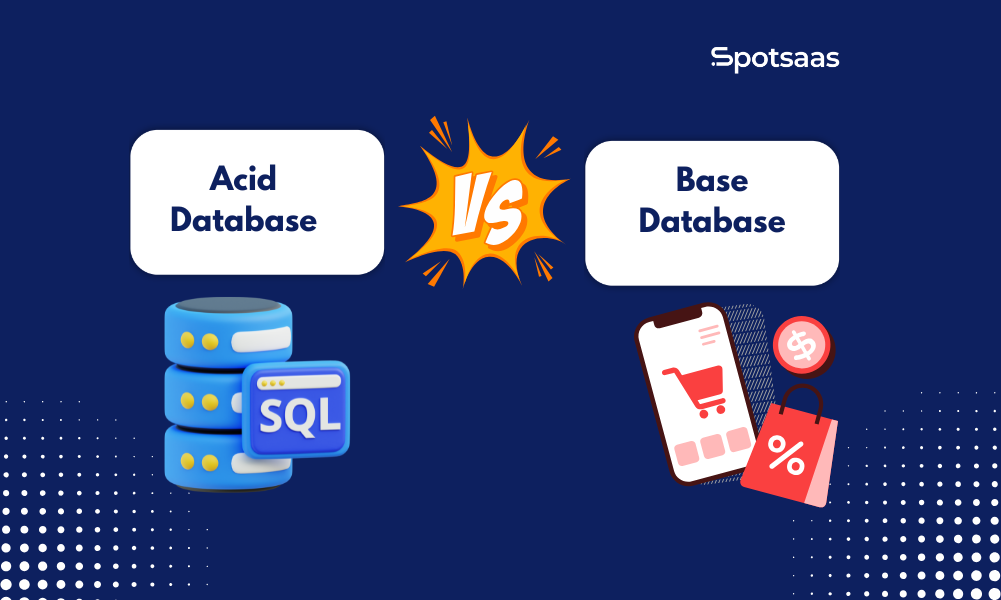In today’s digital age, providing effective customer support is more challenging than ever. Did you know that a robust knowledge base can significantly enhance your customer service abilities?
This article will equip you with 10 practical tips to create and manage a successful knowledge base for your business.
Key Takeaways
- Determine your audience to create a knowledge base that addresses their specific needs.
- Assign admin and user roles for better management and maintenance of the knowledge base.
- Implement a quality assurance process to ensure accuracy and reliability of information.
- Standardize articles with templates for consistency and clarity.
Benefits of Building a Customer Service Knowledge Base
A robust customer service knowledge base offers significant payoffs for both your business and its customers. First and foremost, it can expedite problem-solving. By centralizing information related to product or service queries, you can cut down on time-consuming search operations.
Your support staff will have readily available resources to assist customers swiftly.
Moreover, a well-structured knowledge base enables businesses to provide proactive support rather than reacting to problems after they arise. This leads to improved customer satisfaction as clients receive immediate help from the repository before even reaching out through calls or emails.
Additionally, promoting self-service through a comprehensive knowledge base reflects an organization’s commitment towards transparency and willingness for continuous improvement.
Best Practices for Creating a Knowledge Base
Determine your audience, assign admin and user roles, implement a quality assurance process, standardize articles with templates, create top-quality articles, utilize a reference system, organize content effectively, use macros for responses, integrate with your website, and gather customer feedback.
Determine your audience
To effectively create a knowledge base for customer support, it’s important to determine your audience. This means understanding who will be using the knowledge base and tailoring the content to their needs.
By identifying your audience, you can focus on providing relevant information that addresses their specific pain points and concerns. Taking this step ensures that your knowledge base will be a valuable resource for customers seeking assistance and support.
So, take the time to analyze your target audience before diving into creating articles and resources for your knowledge base.
By determining your audience, you can create a customer service knowledge base that speaks directly to their needs. This allows you to provide targeted solutions and address common questions or issues they may have.
Whether it’s troubleshooting guides, user documentation, or training materials, knowing who you’re writing for enables you to deliver information in a way that is easily understandable and helpful to them.
Assign admin & user roles
Assigning admin and user roles is a crucial step in creating a successful knowledge base. By assigning these roles, you can control who has access to publish, manage, and maintain the knowledge base articles.
Admins have the authority to make changes, update content, and ensure its accuracy. On the other hand, users have limited permissions and can only view or suggest modifications. This division of roles helps streamline the process of article creation and ensures that only authorized individuals are responsible for maintaining the knowledge base.
Implement a quality assurance process
To ensure the accuracy and reliability of your knowledge base, it is crucial to implement a quality assurance process. This involves regularly reviewing and verifying the information in your articles to make sure they are up-to-date and relevant.
By conducting thorough checks, you can identify and correct any errors or inconsistencies, ensuring that your customers receive accurate information when they access the knowledge base.
Moreover, a quality assurance process helps maintain consistency in article formatting and language use throughout your knowledge base, resulting in an enhanced user experience for your customers.
Standardize articles with templates
Standardizing articles with templates is an essential practice when building a customer service knowledge base. By using templates, you can ensure consistency and clarity in your articles.
Templates provide a structured format that guides authors to include all necessary information and follow a specific writing style. This not only saves time but also makes it easier for users to find the information they need quickly.
With standardized articles, you can enhance the overall user experience and deliver consistent support across your knowledge base.
Create top-quality articles
Utilize a reference system
Utilize a reference system to streamline your knowledge base and make it easier for your customer support team to find the information they need. A well-organized reference system allows you to categorize articles, tag them with relevant keywords, and create an efficient search function.
By implementing a reference system, you can ensure that your knowledge base is user-friendly and accessible, enabling faster problem-solving and improved customer satisfaction.
Organize content effectively
Organizing content effectively is crucial for a well-functioning knowledge base. By categorizing and labeling articles properly, users can easily find the information they need without getting lost in a sea of irrelevant data.
Use clear headings and subheadings to group related articles together, and consider implementing a tagging system to further enhance searchability. Additionally, regularly review and update your content to keep it current and accurate.
An organized knowledge base will save time for both customers and support agents, leading to improved customer satisfaction and more efficient support workflows.
Use macros for responses
Save time and improve efficiency by using macros for responses in your customer service knowledge base. Macros are pre-written templates that allow you to quickly respond to common customer inquiries.
By creating macros for frequently asked questions or common support issues, you can provide fast and consistent answers to customers, saving valuable time for both your team and the customer.
This not only improves response times but also ensures that accurate information is provided consistently across all interactions with customers. Implementing macros in your knowledge base can streamline your support process, enhance productivity, and ultimately lead to greater customer satisfaction.
Integrate with your website
Integrating your knowledge base with your website is a crucial step in providing seamless and efficient customer support. By integrating the knowledge base, you can ensure that customers have easy access to relevant information whenever they need it.
This integration allows users to search for answers directly on your website, reducing their reliance on contacting support agents for basic inquiries. It also provides a consistent user experience by keeping them on your website instead of redirecting them to another platform.
Integrating your knowledge base with your website enhances customer satisfaction and improves self-service capabilities, ultimately saving time and resources for both customers and support teams alike.
Gather customer feedback
Collecting feedback from your customers is essential for building a successful knowledge base. It allows you to understand their needs, preferences, and pain points so that you can continuously improve your customer support services.
Implementing feedback mechanisms like surveys, ratings, or comments on your knowledge base articles enables you to gather valuable insights directly from the users. This feedback helps you identify areas of improvement, address common challenges faced by your customers, and enhance the overall user experience of your knowledge base.
By actively listening to customer feedback and taking their suggestions into account, you can ensure that your knowledge base remains relevant and effective in meeting their needs.
How to Use Your Knowledge Base to Enhance Customer Support
Utilize your knowledge base to enhance customer support by adding frequently asked questions to your auto-responder, updating website FAQs using knowledge base reports, and integrating the knowledge base with your website for easy access.
Add frequently asked questions to auto-responder
When customers reach out for support, it’s important to provide them with quick and efficient responses. One way to do this is by adding frequently asked questions (FAQs) to your auto-responder.
By including common inquiries in your automated email replies, you can instantly address customer concerns and save time for both parties involved. This not only improves response times but also helps educate customers about self-service options available in your knowledge base.
Overall, integrating FAQs into your auto-responder can greatly enhance the customer support experience.
Update website FAQs using knowledge base reports
Update your website’s frequently asked questions (FAQs) by utilizing the valuable information and insights gathered from your knowledge base reports. By regularly updating your FAQs, you can ensure that the information provided to customers remains accurate and up-to-date.
Use the data from your knowledge base reports to identify any gaps or areas where more information may be needed. This will help you proactively address common customer queries, improve customer satisfaction, and reduce support tickets.
Keep in mind that updating your FAQs using knowledge base reports is an essential part of maintaining a comprehensive and effective self-service support system for your customers.
Integrate knowledge base with website
Integrating your knowledge base with your website is a crucial step in providing seamless customer support. By doing so, you can ensure that customers have easy access to relevant information whenever they need it.
With a well-integrated knowledge base, users can search for solutions directly from your website and find answers without the need to contact customer support. This not only saves time for both parties but also enhances the overall user experience.
Additionally, integrating your knowledge base with your website allows you to gather valuable insights on what topics or articles are most frequently accessed by customers, helping you further improve and refine your support resources.
Conclusion
In conclusion, implementing these 10 tips for building a knowledge base can greatly enhance your customer support. By determining your audience, assigning admin and user roles, and standardizing articles with templates, you can create a valuable resource for educating customers and providing proactive support.
Integrating the knowledge base with your website and gathering customer feedback will further improve customer success. So start implementing these best practices today to build an effective knowledge base that will benefit both your customers and your business.
FAQs
1. What are some tips for building a knowledge base to enhance customer support?
To enhance customer support, consider establishing admin roles, frequently publishing, managing and maintaining knowledge base articles, tracking support tickets and calls.
2. How can a service-based Knowledge Base improve my business?
A service-based knowledge base can proactively provide support to your customers, improve their success rate with your product or service and manage information more effectively.
3. Is it difficult to maintain knowledge base articles?
While maintaining up-to-date information in the knowledge base may be challenging, implementing helpdesk software or enhancing UI could simplify this task.
4. Can I use a Knowledge Base as an Information Repository?
Yes! A well-structured Knowledge Base acts as an excellent repository of information helping both team members and customers access vital informations promptly.
5. Does integrating advanced search facilities on the self-service portal boost user experience?
Absolutely! Features like enhanced UI and advanced search make navigating through FAQ sections easier for users which significantly improves overall user experience.



